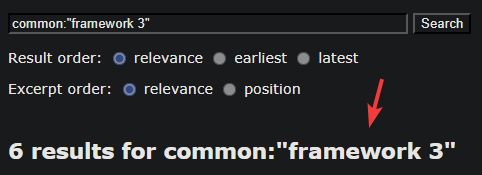You can check this link to a pdf document (there are more good documents on the author’s site):
(48) Seth formally introduced the concept of Frameworks 1 and 2 in one of his dictated books in The Individual
and the Nature of Mass Events, (1981), session 815, December 17, 1977, Amber-Allen, San Rafael, California,
1995. The concept had originally been introduced during a private session on September 17, 1977, according to
Rob Butts’ note on p. 63.
The concept of Frameworks of Consciousness describes closely related regions of consciousness that work
together to make the physical universe, as we know it, possible. They are not stepping stones or layers of so-
called higher consciousness either, but are interpenetrated within each other. Obviously, Frameworks 2, 3, 4 and
beyond exist ‘‘underneath’’ the range of our physical senses.
Other thinkers have used different methods to describe the same thing as Seth. Physicist David Bohm uses the
terms Explicate Order and Implicate Order; the Explicate Order describes physical reality and the Implicate Order
describes nonphysical reality as a region that contains the ‘‘source energy’’ all of the potential states and
probabilities possible in physical reality. Bohm even postulates Super Explicate and Super Implicate Orders that
are analogous to Seth’s Frameworks 3 and 4.
This concept of source and manifest realities is not new either. There are accounts that date back to Plato that
describe the same phenomena. Plato’s famous cave allegory compares physical reality to two people chained to
an inside wall beyond the sight lines of the cave’s entrance. Thus all they ever see are the shadows projected
through the mouth of the cave from a fire burning ‘‘outside.’’ Their chains (i.e. physical senses) limit their
perceptions to the shadows on the cave’s wall, so they are unable to see the fire (i.e. source reality) ‘‘outside’’ of
the cave.
(49) Here’s more material on Frameworks 3 and 4 from The Individual and the Nature of Mass Events:
‘‘There is, incidentally, a Framework 3 and a Framework 4, in the terms of our discussion – but all such labels
are, again, only for the sake of explanation. The realities are merged.’’ [p. 71]
Later on, Seth describes the relationship between Jane Roberts and himself when he ‘comes through’ during a
session:
‘‘While our meetings take place in your time, and in the physical space of your house, say, the primary encounter
must be a subjective inner one, an intersection of consciousnesses that is then physically experienced.
‘‘The encounters themselves occur in a Framework 3 environment. That framework of course, again in terms of
an analogy, exists another step away from your own Framework 2. I do not want to get into a higher-or-lower
hierarchy here, but the frameworks represent spheres of action. Our encounters initially take place, then, beyond
the sphere that deals exclusively with either your physical world or the inner mental and psychic realm from
which our present experience springs.’’ [pg 88]
‘‘These frameworks, while I speak of them separately, exist one within the other, and each one impinges upon
the other. To some extent you are immersed in all realities.’’ [p. 89]
Finally, from The God of Jane: A Psychic Manifesto, Chapter 13, Seth on the Big Flats Affair, Moment Point Press,
Portsmouth, New Hampshire, 2000:
‘‘I told you that there was a Framework 3 and mentioned a Framework 4 some time ago. You must understand
that I am making distinctions for your benefit.
‘‘Framework 2 is connected with the creativity and vitality of your world. In your terms, the dead waken in
Framework 2 and move through it to Framework 3, where they can be aware of their reincarnational identities
and connection with time, while being apart from a concentration upon earth realities. In those terms, the so-
called dead dip in and out of earth probabilities by traveling through Framework 2, and into those probabilities
connected with earth realities.
‘‘Some others may wind up in Framework 4, which is somewhat like Framework 2, except that it is a creative
source for other kinds of realities not physically oriented at all and outside of, say, time concepts as you are used
to thinking of them. In a way impossible to describe verbally, some portion of each identity also resides in
Framework 4, and in all other Frameworks.’’ [p. 129.]

